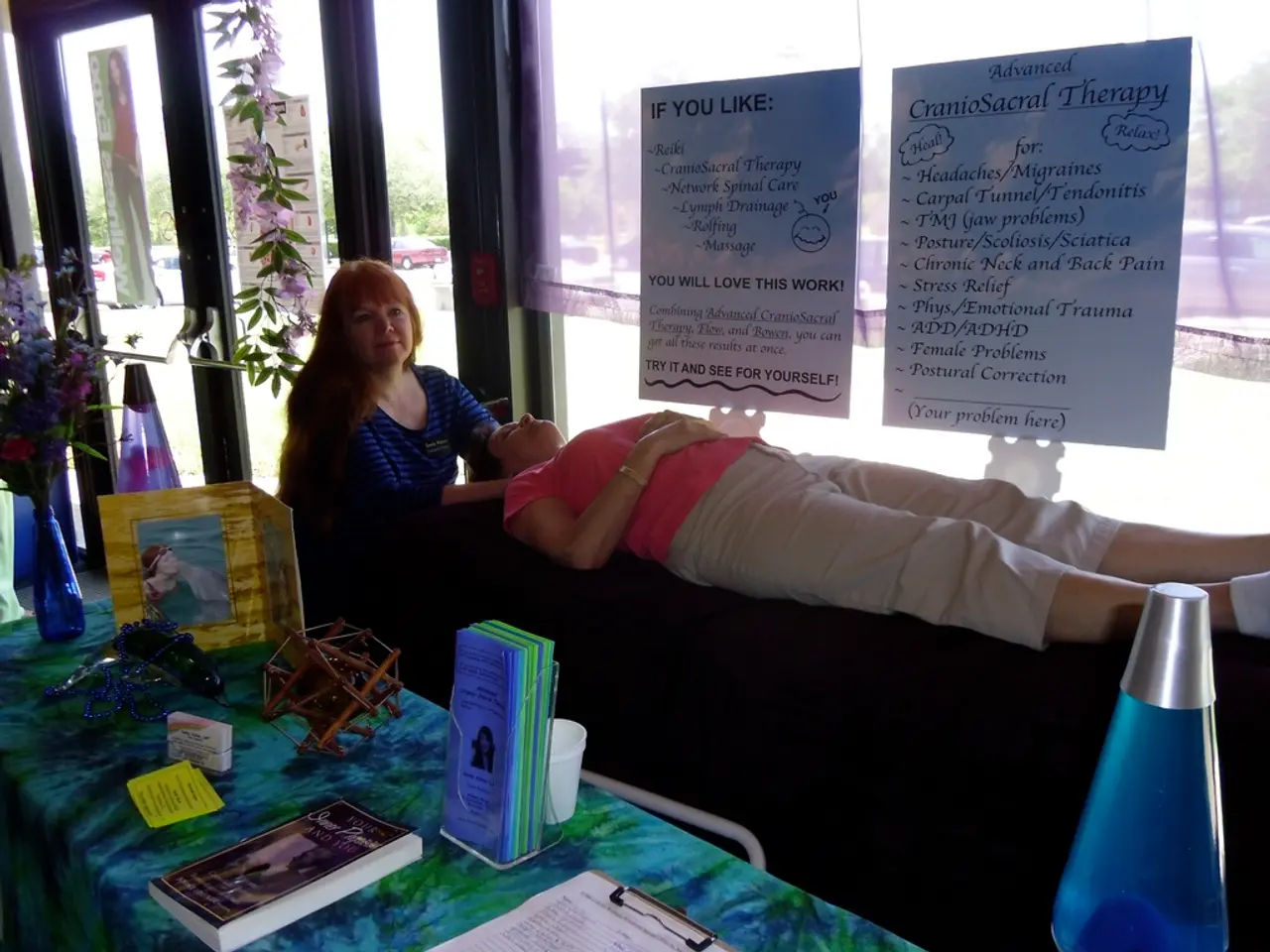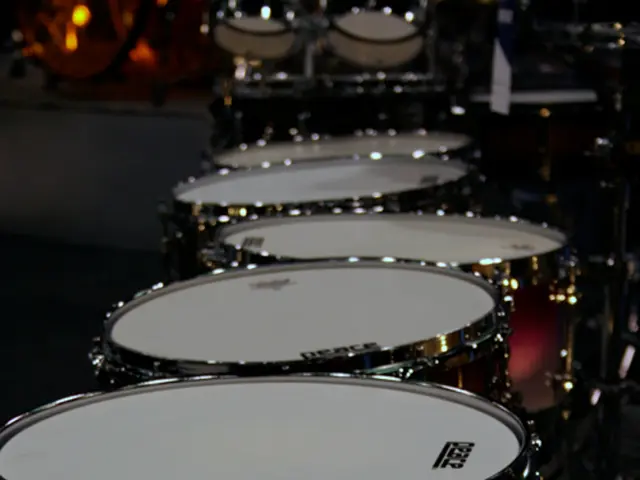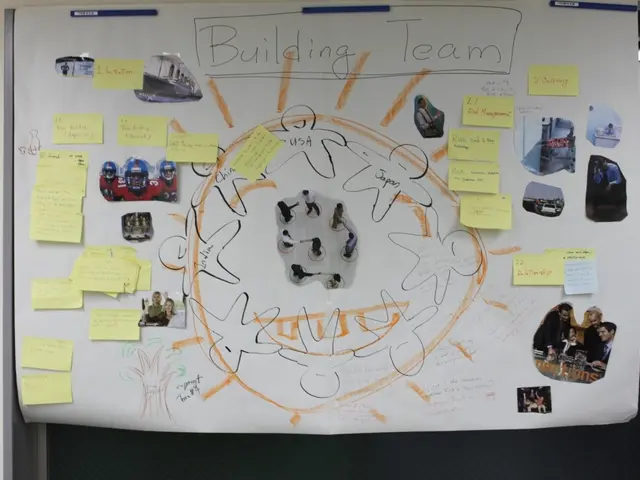Embracing Comprehensive Wellness Strategies for Pain Alleviation
In the quest for pain relief, many individuals are turning to holistic health approaches that extend beyond traditional medicine. These alternative therapies, which focus on physical therapies, natural supplements, and alternative modalities, can provide significant relief and improve overall wellbeing.
One such approach is Acupuncture and Electroacupuncture. This ancient Chinese practice involves inserting thin needles into specific points in the body to stimulate energy flow and promote pain relief. Electroacupuncture adds mild electrical stimulation to acupuncture points, which can further reduce pain and joint stiffness[1][2][5].
Physical Therapy and Rehabilitation are also vital components of holistic pain management. Targeted exercises and therapies help restore movement, strengthen muscles, and reduce pain related to musculoskeletal conditions. This includes specialized programs tailored to individual needs[1][2][4].
Thermal Therapies, using heat, ice, or water-based therapies, can reduce inflammation, improve circulation, and alleviate pain non-invasively[1]. Cupping Therapy, an ancient technique using suction cups on the skin, improves blood flow and relieves muscle tension, which may help reduce pain in conditions like fibromyalgia[1].
Chiropractic Care, which focuses on improving spinal and joint alignment, can relieve pain and improve mobility, particularly in back and joint pain[2]. Herbal Supplements and Anti-inflammatory Herbs, such as turmeric (curcumin), ginger, garlic, cinnamon, Boswellia, magnesium, and ashwagandha, have shown efficacy in reducing pain and inflammation[1][2].
Low-impact Physical Activities like swimming, cycling, Pilates, and yoga can enhance flexibility, reduce stiffness, and promote relaxation without exacerbating pain[2][3]. Stress Reduction Techniques, including meditation, mindfulness, cognitive behavioral therapy, and deep breathing exercises, help lower inflammation by reducing stress hormones and improving pain coping skills[2][3].
Regenerative Medicine Integration, combining holistic practices with regenerative treatments like platelet-rich plasma (PRP) or stem cell therapies, can further promote healing and pain relief for conditions like joint pain and neuropathy[1]. Transcutaneous Electrical Nerve Stimulation (TENS), a non-invasive electrical therapy, can reduce pain and swelling, often used in arthritis management[5].
Adopting a holistic lifestyle and integrating these practices into your daily routine can help take an active role in managing your pain and promoting overall wellbeing. Prioritizing good sleep hygiene and getting enough restorative sleep can support the body's natural healing processes and reduce pain. Herbal medicine, such as turmeric, ginger, and chamomile, have natural pain-relieving properties and can be used as alternative remedies. Massage therapy can help reduce muscle tension, improve circulation, and promote relaxation, leading to pain relief.
When combined in a multi-modal treatment plan tailored to the individual's condition, these modalities can significantly enhance pain relief and improve quality of life through natural and holistic means[1][2][5]. Consulting a qualified healthcare professional who specializes in holistic medicine can provide guidance on the best approach for managing pain.
[1] Holistic Online. (2021). Holistic Pain Management: Alternative Therapies for Pain Relief. Retrieved from https://www.holisticonline.com/holistic-health/holistic-pain-management-alternative-therapies-for-pain-relief/
[2] Healthline. (2021). 17 Natural Ways to Get Pain Relief. Retrieved from https://www.healthline.com/health/pain-management/natural-pain-relief
[3] Mayo Clinic. (2021). Alternative Medicine: Holistic Approaches to Health and Wellness. Retrieved from https://www.mayoclinic.org/healthy-lifestyle/consumer-health/in-depth/alternative-medicine/art-20043877
[4] WebMD. (2021). Physical Therapy for Back Pain. Retrieved from https://www.webmd.com/back-pain/back-pain-physical-therapy
[5] Arthritis Foundation. (2021). Transcutaneous Electrical Nerve Stimulation (TENS). Retrieved from https://www.arthritis.org/living-with-arthritis/treatments/natural/other-therapies/transcutaneous-electrical-nerve-stimulation-tens/transcutaneous-electrical-nerve-stimulation-tens.php
Science plays a significant role in the exploration of health-and-wellness, particularly in the case of pain relief. Fitness-and-exercise, such as swimming, cycling, Pilates, and yoga, can enhance flexibility, reduce stiffness, and promote relaxation without exacerbating pain. Mental-health strategies like meditation, mindfulness, cognitive behavioral therapy, and deep breathing exercises help lower inflammation by reducing stress hormones and improving pain coping skills. Nutritional supplements like turmeric, ginger, and chamomile, have natural pain-relieving properties and can be used as alternative remedies.







